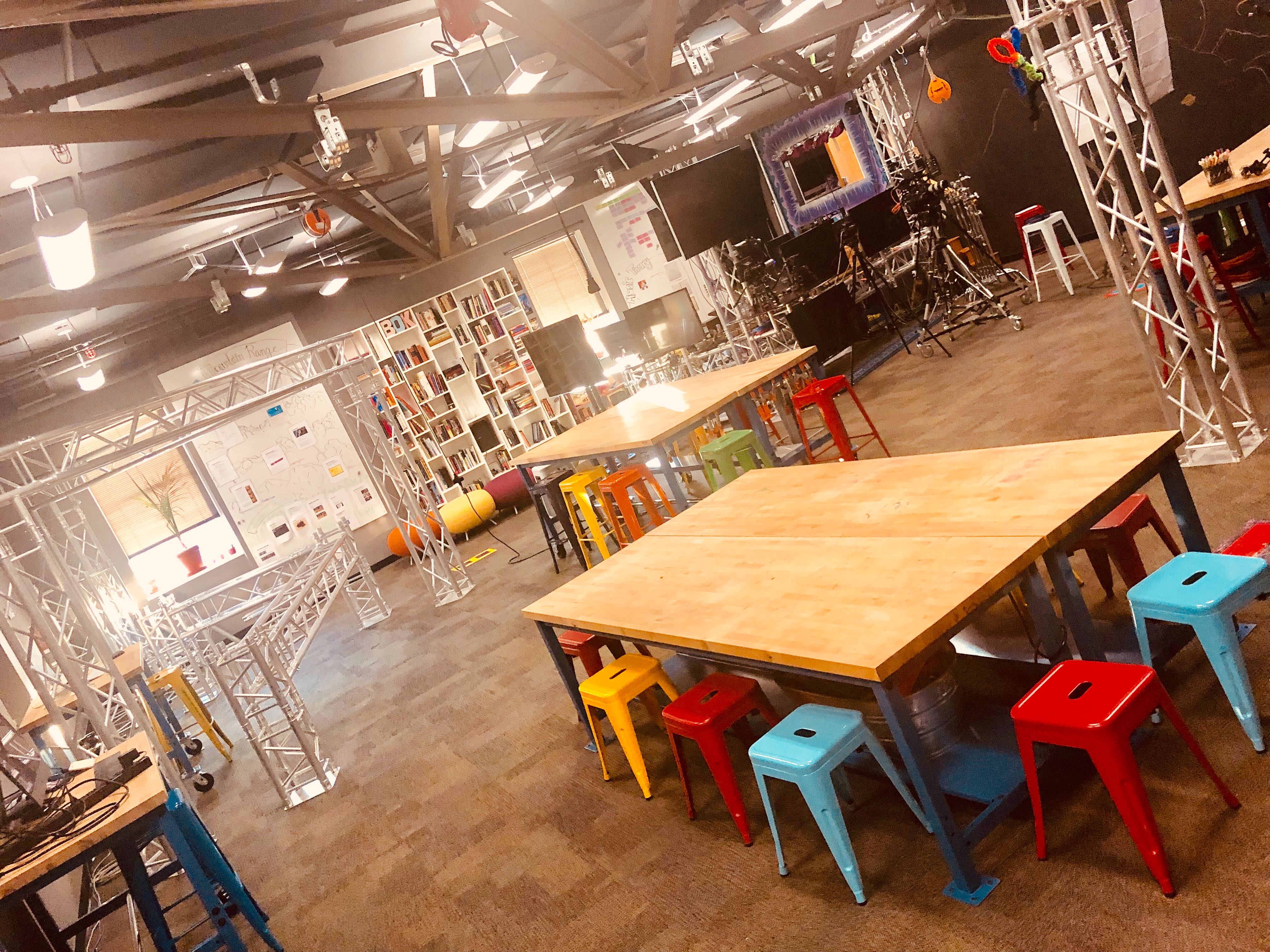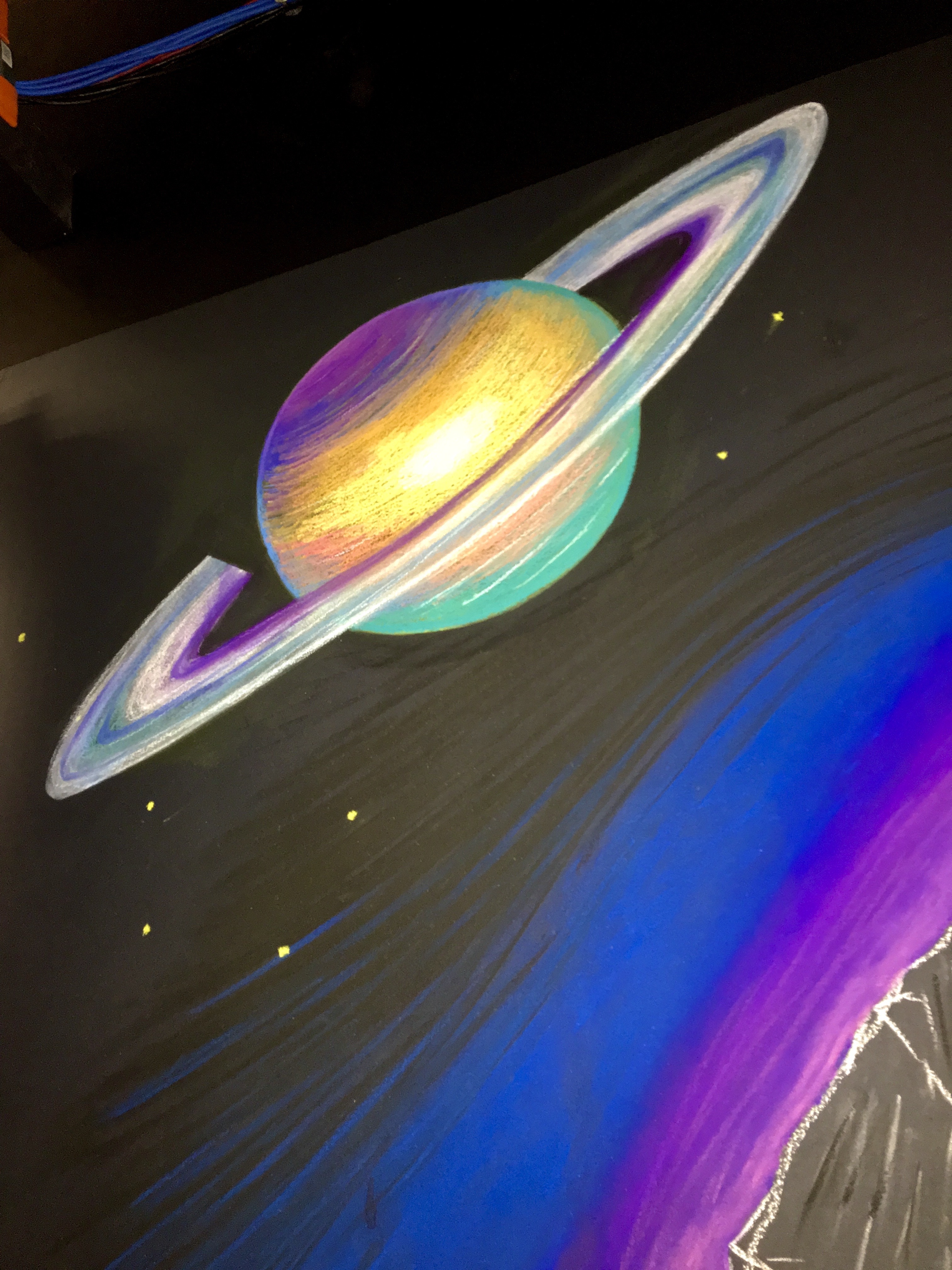The Staggering Story of StudioLab
Meeting every Wednesday (and the occasional Thursday) evening, the Learning Lab becomes a dedicated space to StudioLab. StudioLab started out as a time that anyone who was interested in being creative could come together and reimagine the ways in which the Learning Lab was set up. When courses needed something different from the space, StudioLab stepped in to save the day. Whether a stage needed creating or a new backdrop was requested, members of StudioLab would work to come up with creative solutions to such tasks.
StudioLab quickly evolved into a time that anyone who was interested in exploring their creativity outside of the regular labs could do so; often resulting in amazing projects and designs. As more courses requested the help of the Learning Lab, members of StudioLab began to channel their creative energies into the innovative ideas of course heads. Concepts which were once wishful thinking soon became a reality; courses would "pitch" their ideas to StudioLab, and members would help craft these ideas into incredible tools for learning.
September 2019
09/01/19: Marlon's Solution to the "Gray Zone"... the Birth of StudioLab
With StudioLab originally being imagined as a way to redesign the space, its first impact originated as a happy accident. The plain gray wall at the back of the Learning lab had always irked Marlon, but a temporary position to lean a magnetic board presented us with a permanent solution. Thus, StudioLab was born.
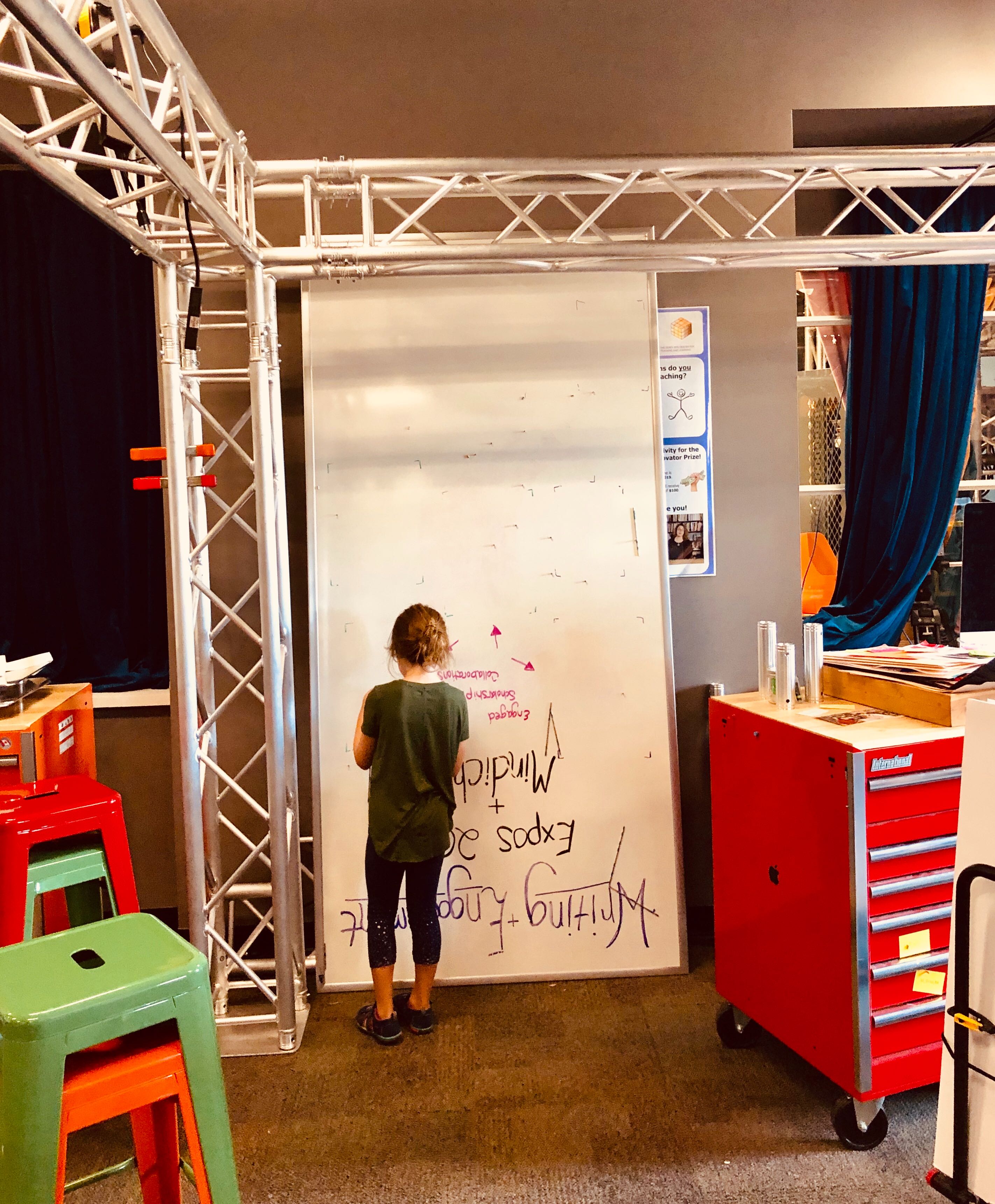
09/01/19: Brick Room Becomes Computer Room
Another
temporarychange by Marlon gains popularity and becomes permanent. The room adjacent to the main studio became the main hub for desktop PCs; an incredibly convenient location for those editing images/footage in real-time.
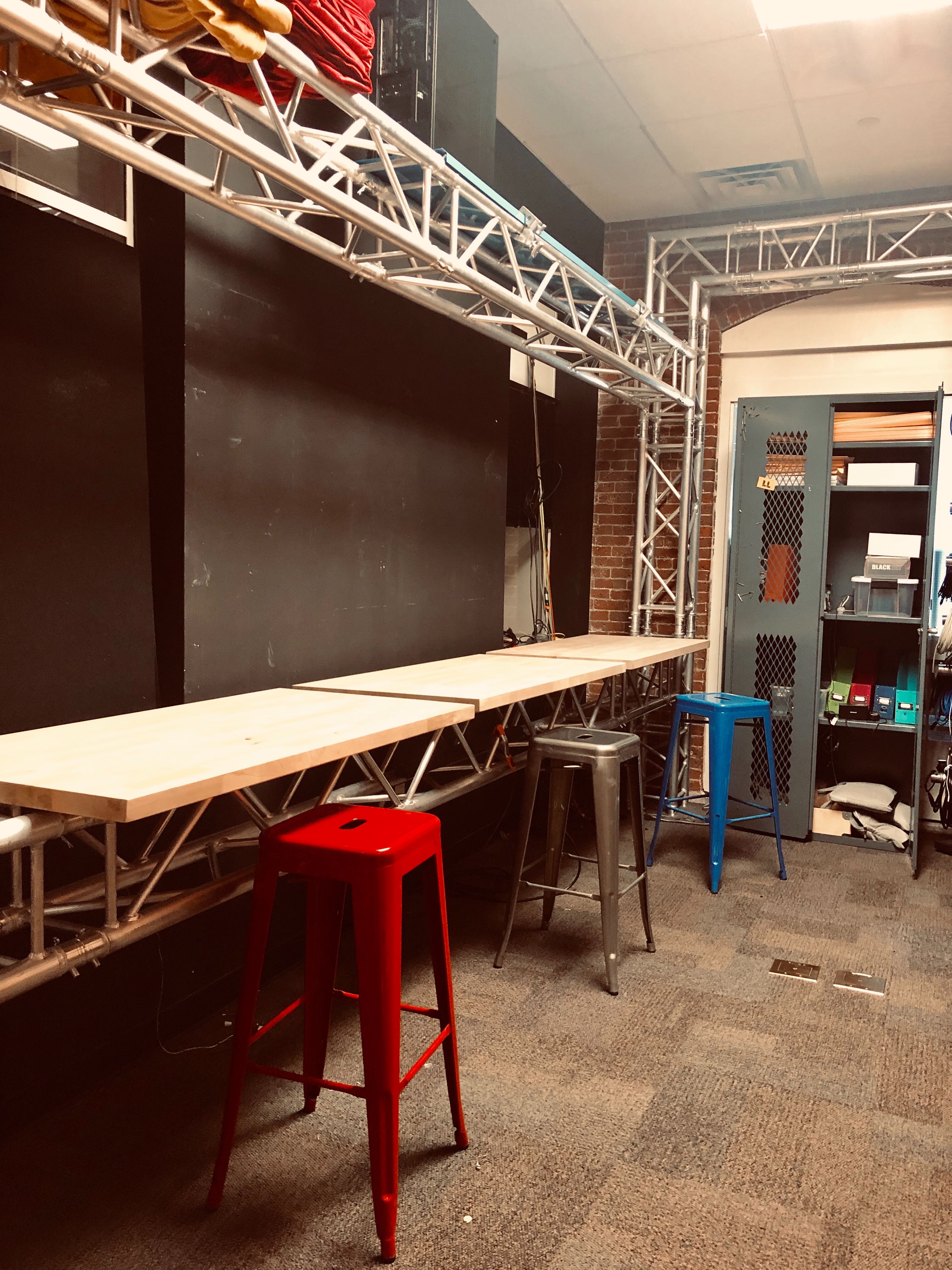
09/18/19: Truss, Tables and Talent!
On our very first official StudioLab, the tables and truss were rearranged to create what would be the first iteration of our 2019/20 Learning Lab! In the background, you can also see the very beginning of the chalk wall. A preliminary outline was sketched out, laying the foundations for what turned out to be a staple of the Learning Lab this year!
October 2019: The Month of the Chalk Wall
The majority of October's StudioLabs were dedicated to populating the large, blank chalk wall which spanned across the entire Learning Lab. Knowing that this would inevitably be the backdrop for many shoots throughout the year, StudioLab members Connor and Jordan spent time designing the wall before getting to work on bringing their ideas to life. A rainbow tree was seen as a creative solution to merge with the existing truss drawing - but what would the tree be looking over? Why, a mountain range of course! Once the mountain range was complete, the sky looked a little blank. Soon, a sunset and space-themed objects filled the night sky. Many of the drawings subtly incorporated aspects of the Learning Lab. For example, the satellite was created from truss pieces, and the mountain range has a hidden keyboard embedded within it.

Here, you can see how the drawings complement the main studio in the background!
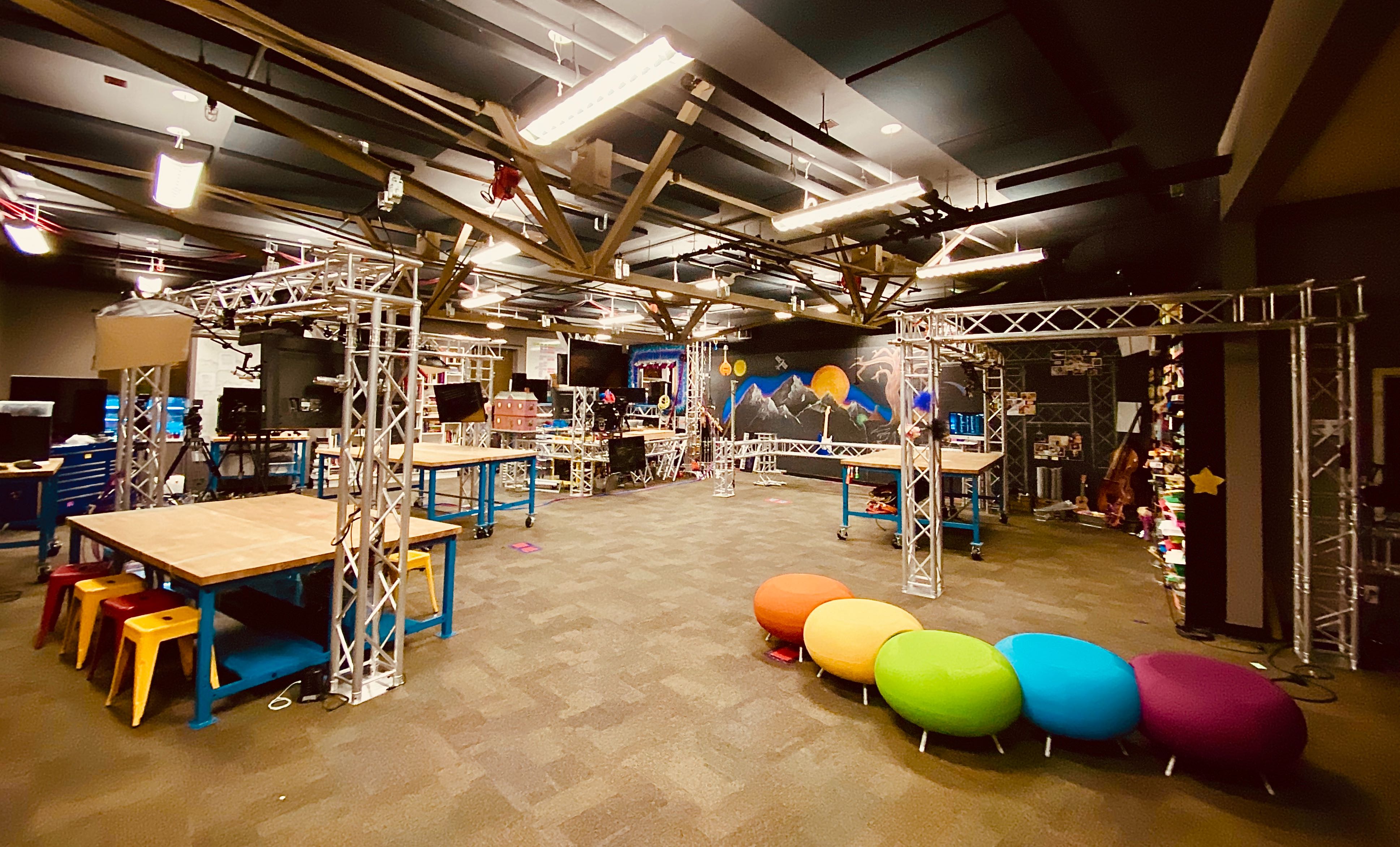
This drawing of saturn was later added to help fill out some blank space and to add even more color.
November 2019
EMR 135 - Climate Migration: Histories, Borders, and Activism
In November, we started our work with EMR 135. The class had many objectives it wanted to achieve over the course of the semester. At the Learning Lab, we focused on creating a physical tree that could be utilized in a workshop for students to interact with, each with their own project in mind. At the very beginning of December, we hosted their final event in the Learning Lab, setting up the tree and other resources for the students to use. The event was a huge success; everyone who attended thoroughly enjoyed hearing what the students had been working on.
11/15/19: Tree Trunk Skeleton
We used chicken wire to create the base and shape of the structures we were hoping for.
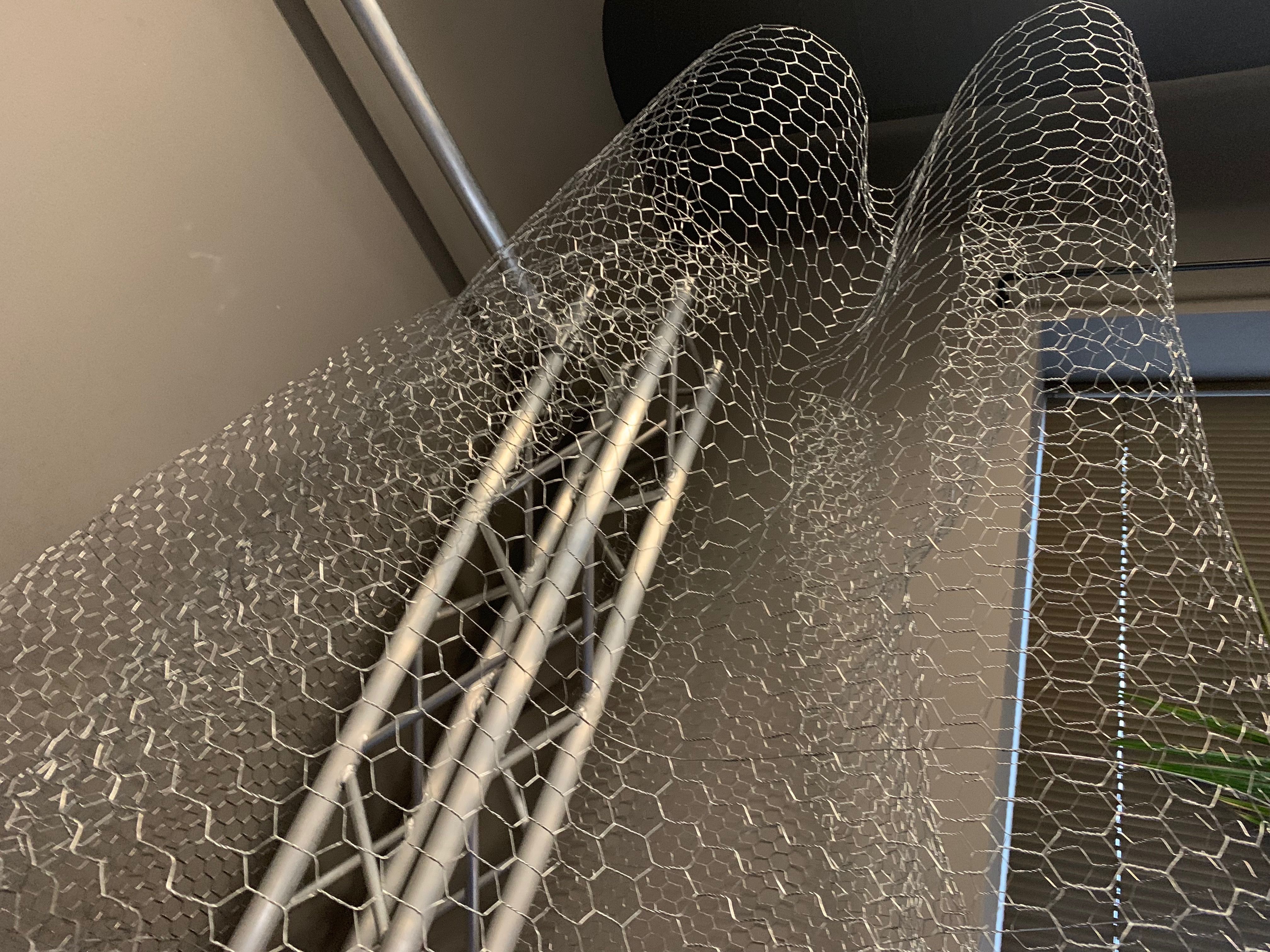
11/18/19: Creating the Branches
The branches were created to extend as far as possible (within the realm of physics), so that they could be utilized by students of the class.
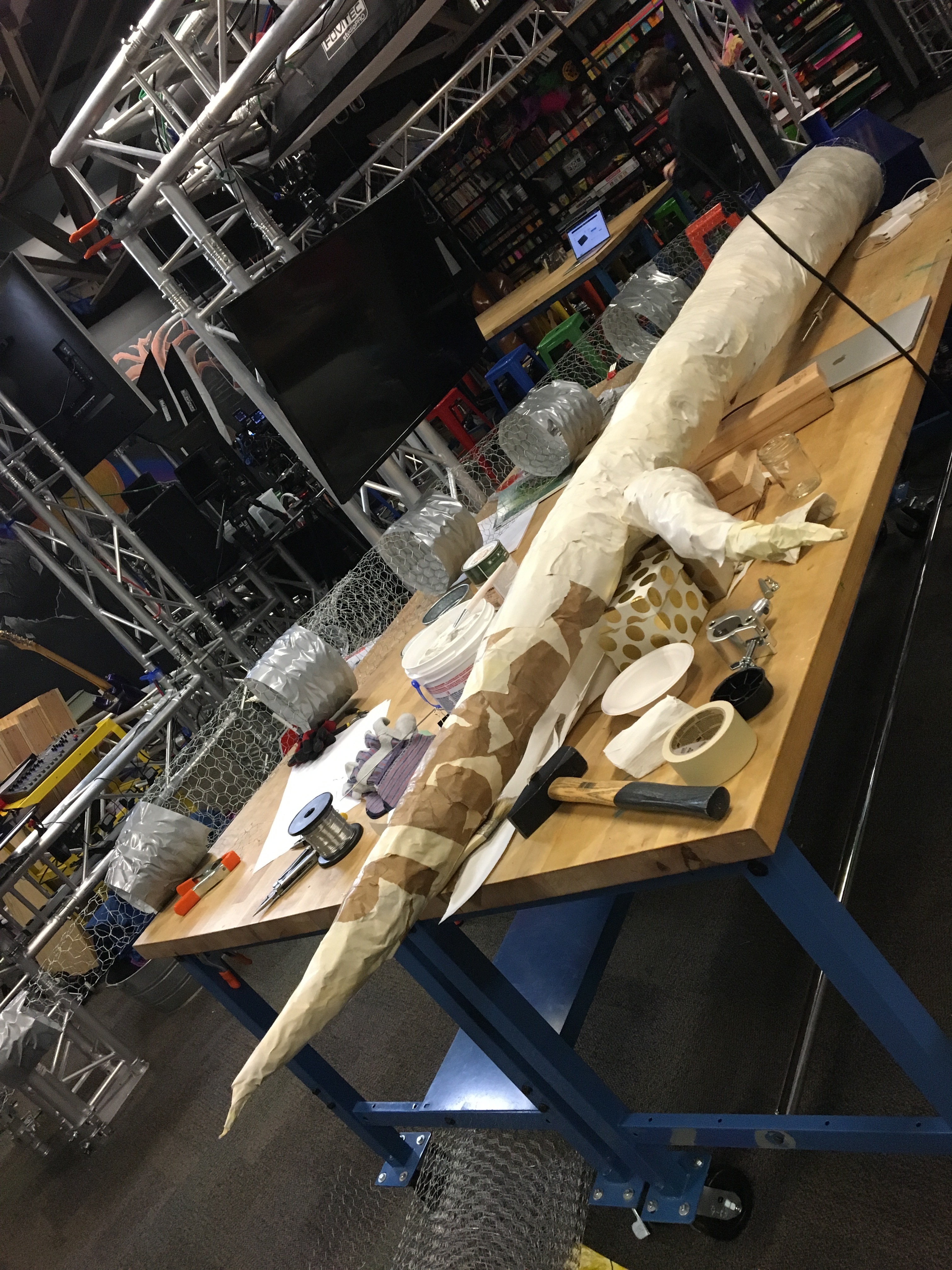
11/19/19: Inside the Branches
Check out this cool gif Marlon made from within one of the branches!
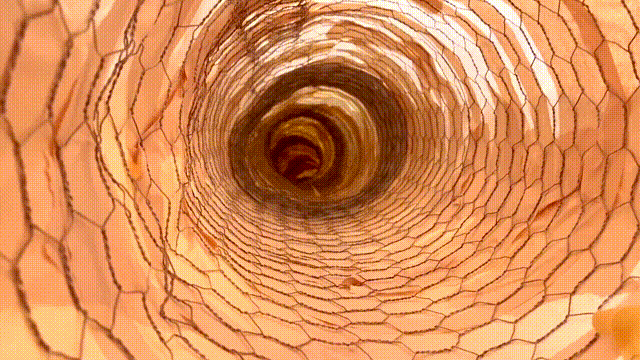
11/21/19: Layering the Trunk!
After researching many methods for papier mache, we got to work with solidifying our tree!
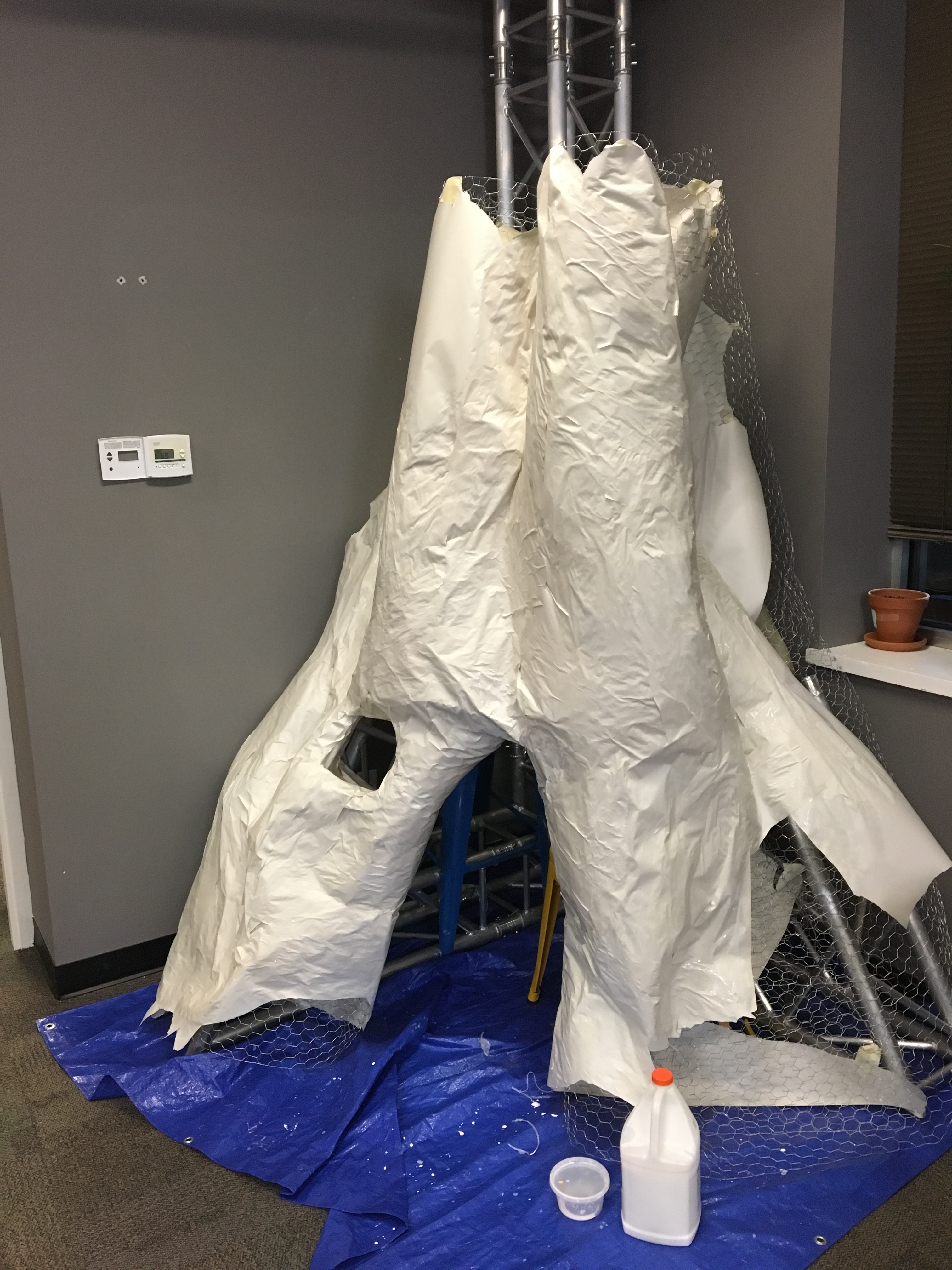
11/25/19: Leaves and Butterflies
The class required many leaves/butterflies to be cut out that could be hung from various objects around the Lab. The students had to write specific messages on each of these relevant to their projects - here is Connor, proud with his cutting work!
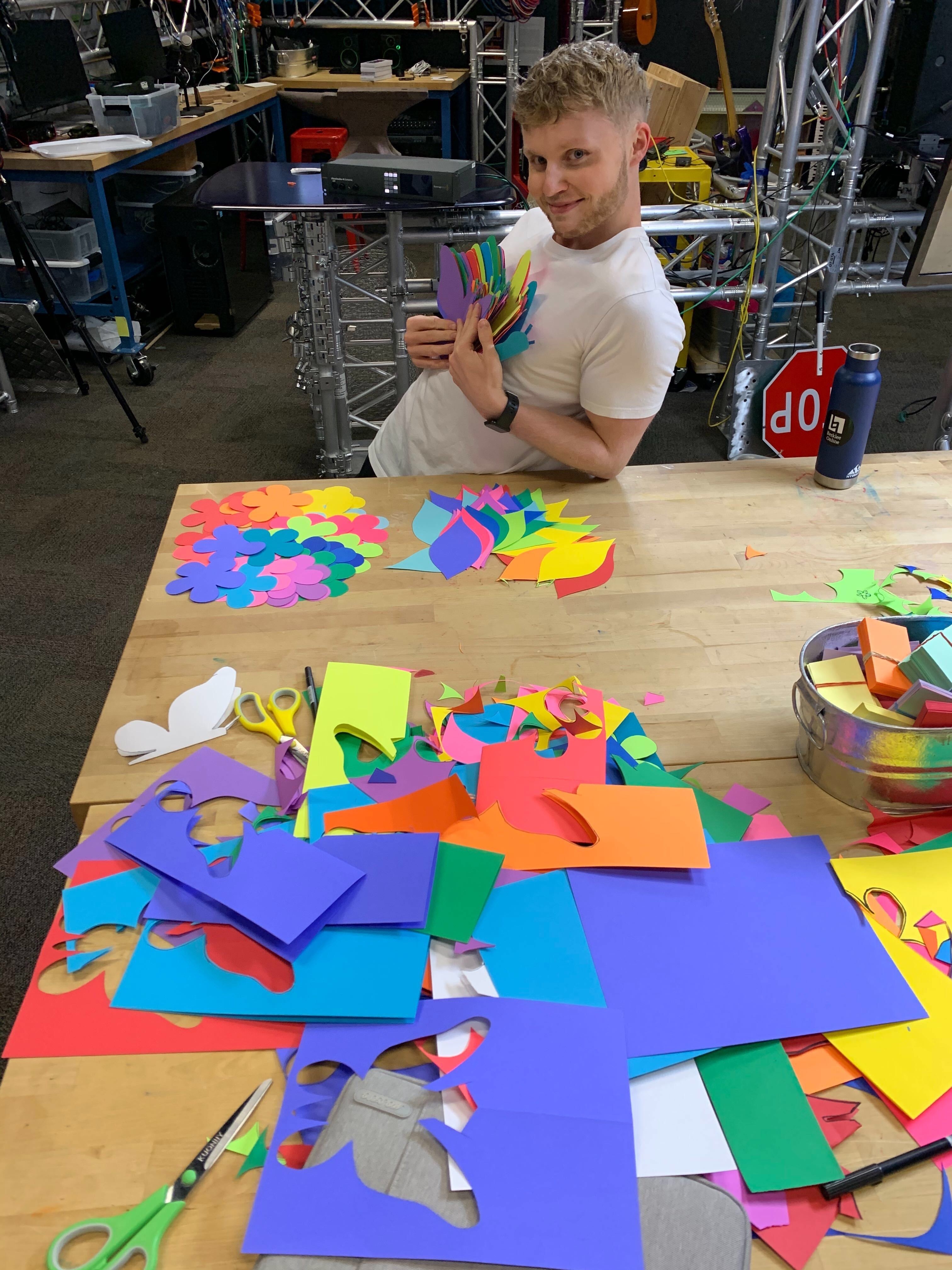
11/26/19: Time to Paint!
Once the tree had been fully solidified, we got to work on painting. We experimented with different browns in order to make the tree as realistic as possible. However, upon a visit from the Course Head, the chalk drawing of the "rainbow tree" on the main wall in the studio was asked to be replicated. We absolutely loved the idea, and tried our best to make the tree look as creative (and colorful) as possible, whilst still of course resembling a tree!
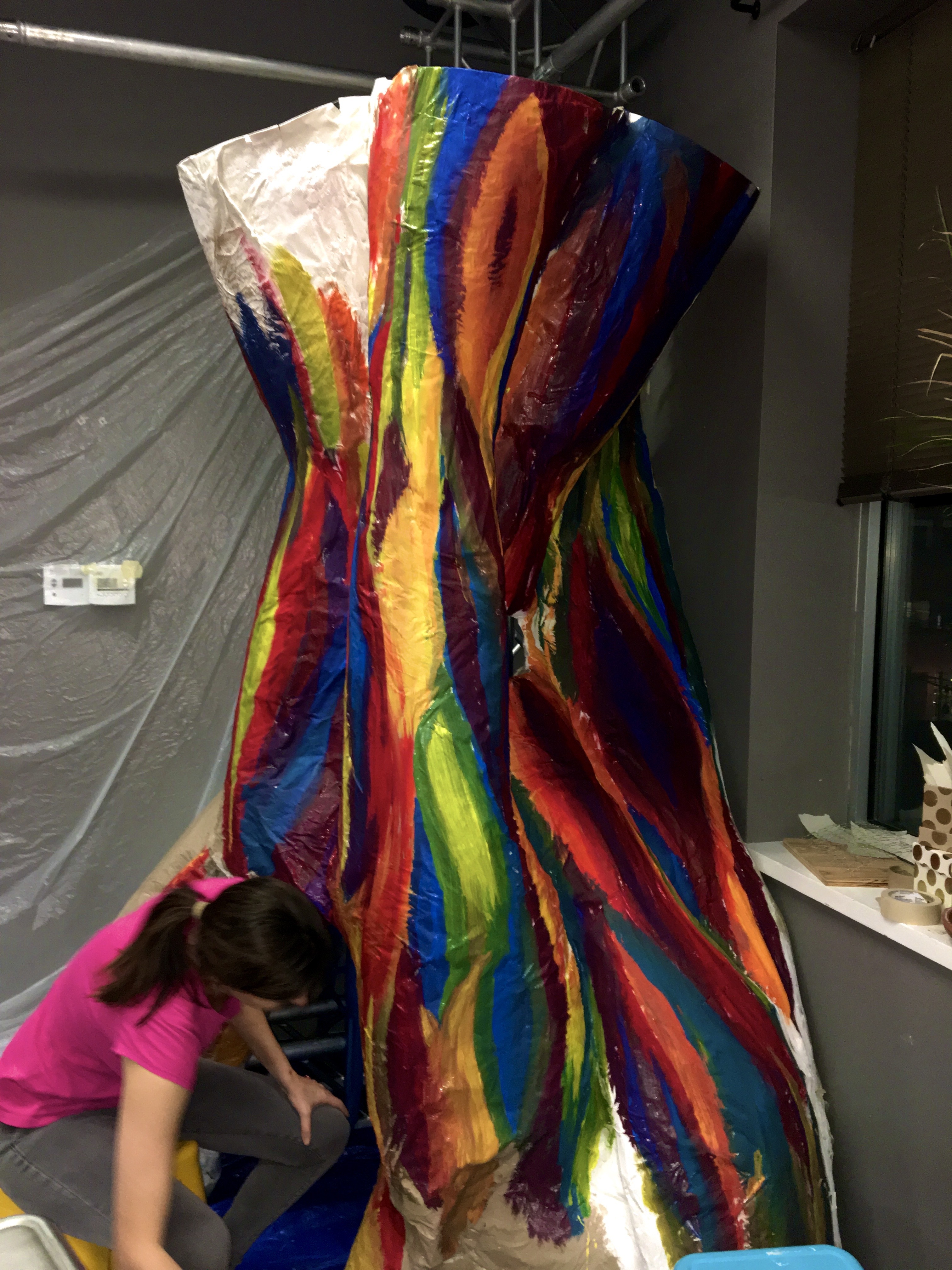
11/27/19: Putting It All Together
Now painted, the tree could be put together using a piece of truss as a base to hold it in place. We even designed it so that a student could enter the tree and look out at the studio from within, if they wanted to!
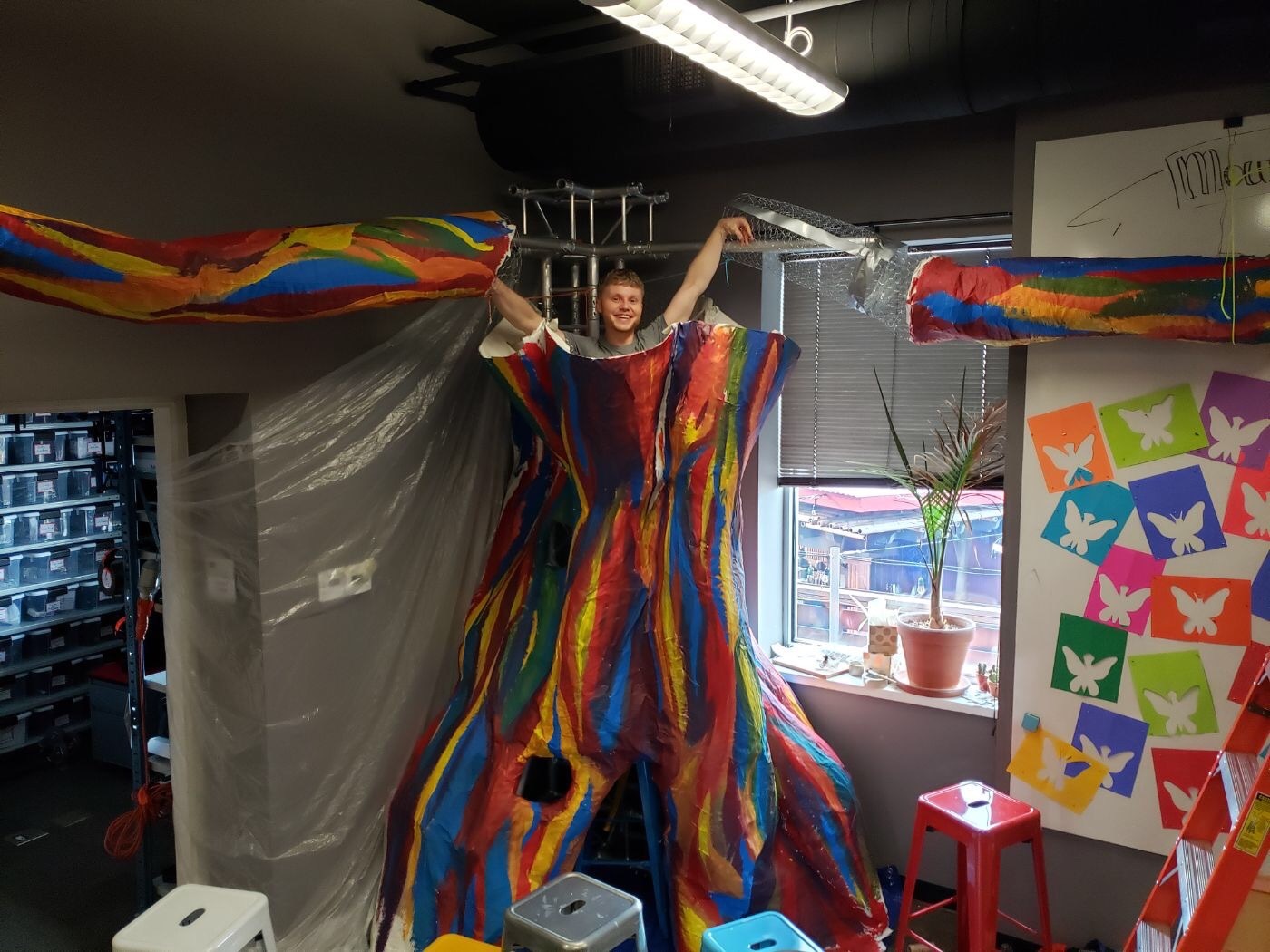
11/29/19: The Finished Product
Behold, the completed tree!

December 2019
12/10/19: The Learning Lab Winter Gallery
Back in December, the Learning Lab hosted its annual Winter Galley, presenting the effort and work that had been produced by members throughout the Fall semester. For such an event to be successful, the space of the main studio needed to be changed once again. Not only this, but we had to figure out the where each project would be situated, and how it was going to be presented to those visiting the Learning Lab. The Gallery was a huge success; guests from across the university came to view our work and to celebrate the end of the semester with us.
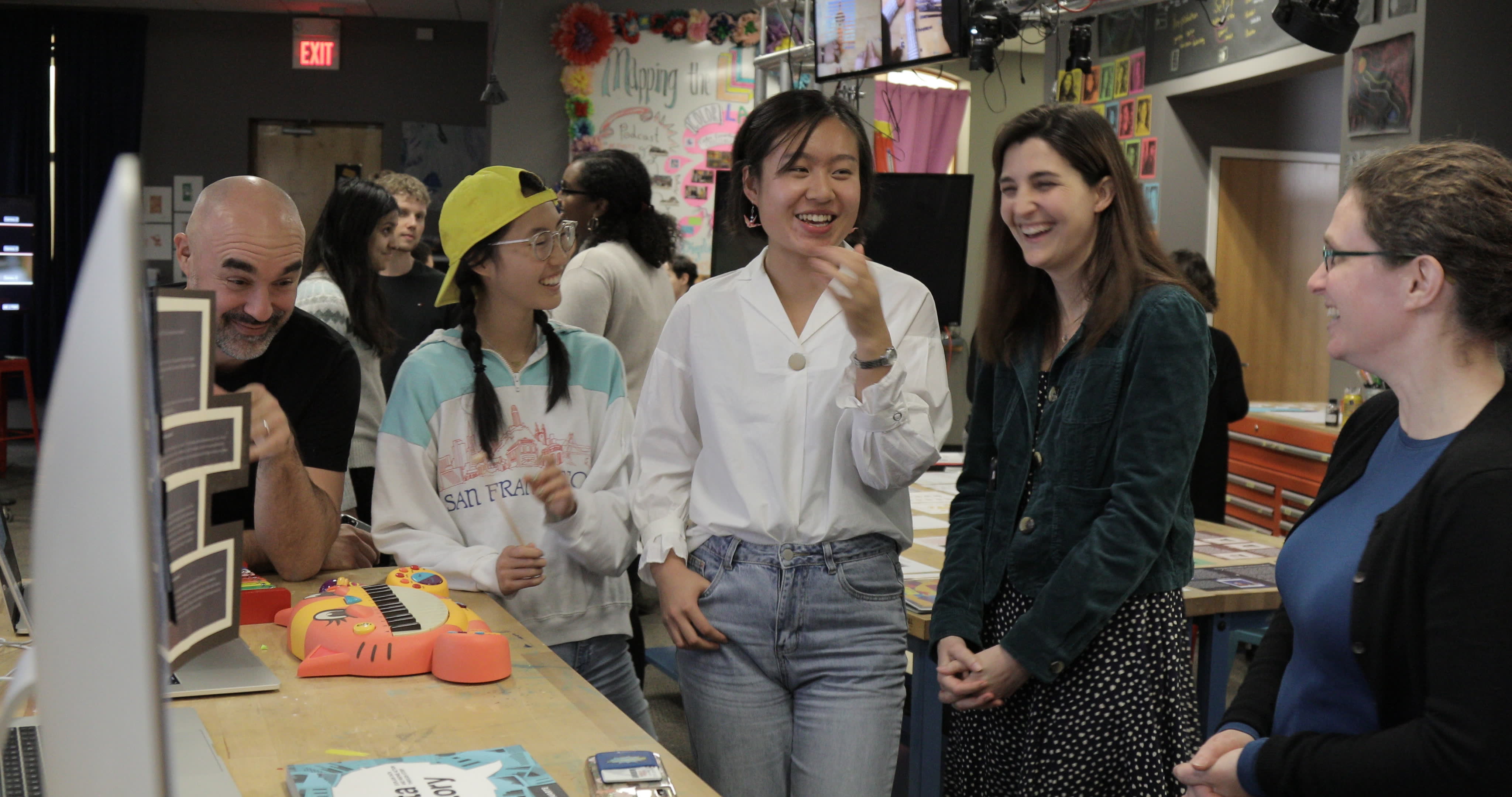
January 2020
01/30/20: The 1000:1 Project
As January kicked off our 2020, the new semester brought us new courses. New courses meant new projects! Enter StudioLab. Itching for another "big" project, members of StudioLab met to discuss a project for an Expos course. The course revolved around studying features and demographics along the Charles River. For the final project, the goal was to create a 1000:1 scale model of the Charles River, running throughout the Learning Lab. After further discussions, we StudioLab members helped craft the intermediate project for the course; students would require 1000:1 scale models of Boston Common to use with their own research on features and/or demographics.
Before we met to discuss the intermediate project, we wanted to ensure the final project was in the works from the very beginning; we knew that it would not be easy and would take extensive planning. To begin with, we used Cinema4D to see whether the 1000:1 scale was feasible... it was!
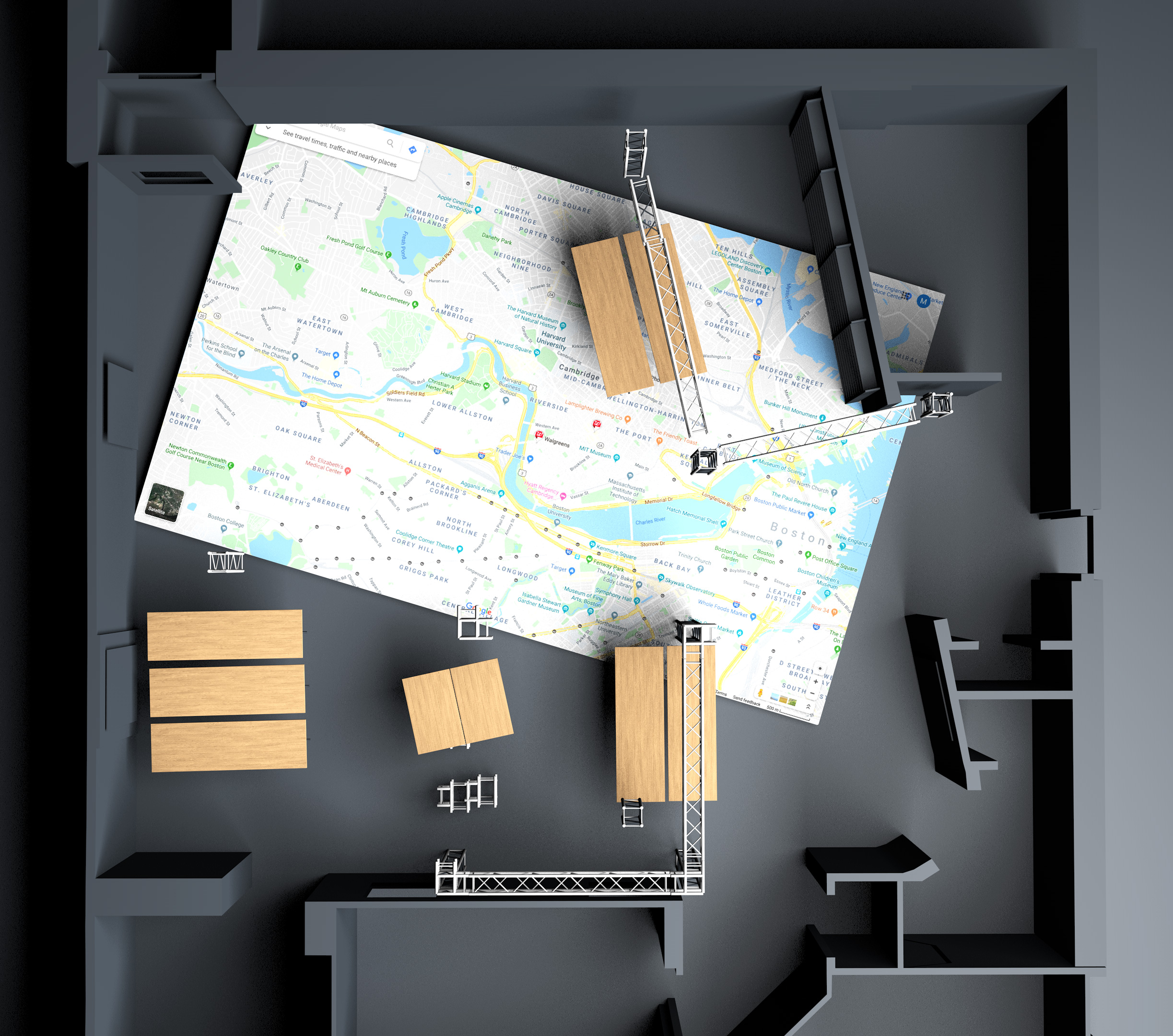
With this in mind, we began working on the scale models of Boston Common. Around 8-10 would be required, so we had to ensure that any method was replicable and doable within the timeframe given. The best method was to use an overhead projecter at the correct magnififcation which would present a 1000:1 scale of Google Maps onto the table. We then traced the revelant outlines for Boston Common from the projection, and used this drawing to trace the other remaining models.
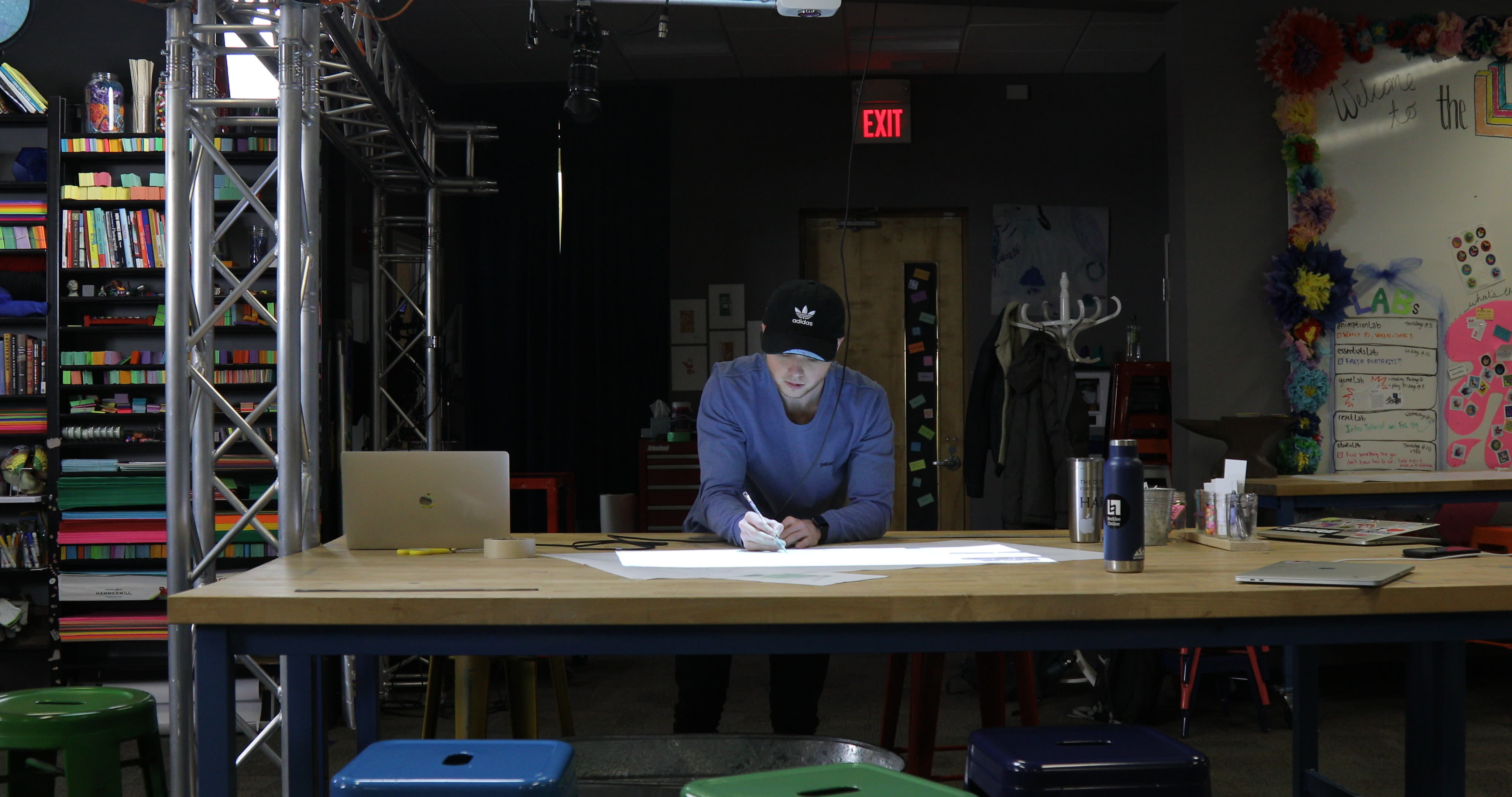
Here, you can see a close-up of how the tracing process was carried out by Connor.

The resulting drawings were individually mounted onto foam boards and cut out; students could then use them as physical bases for their projects!
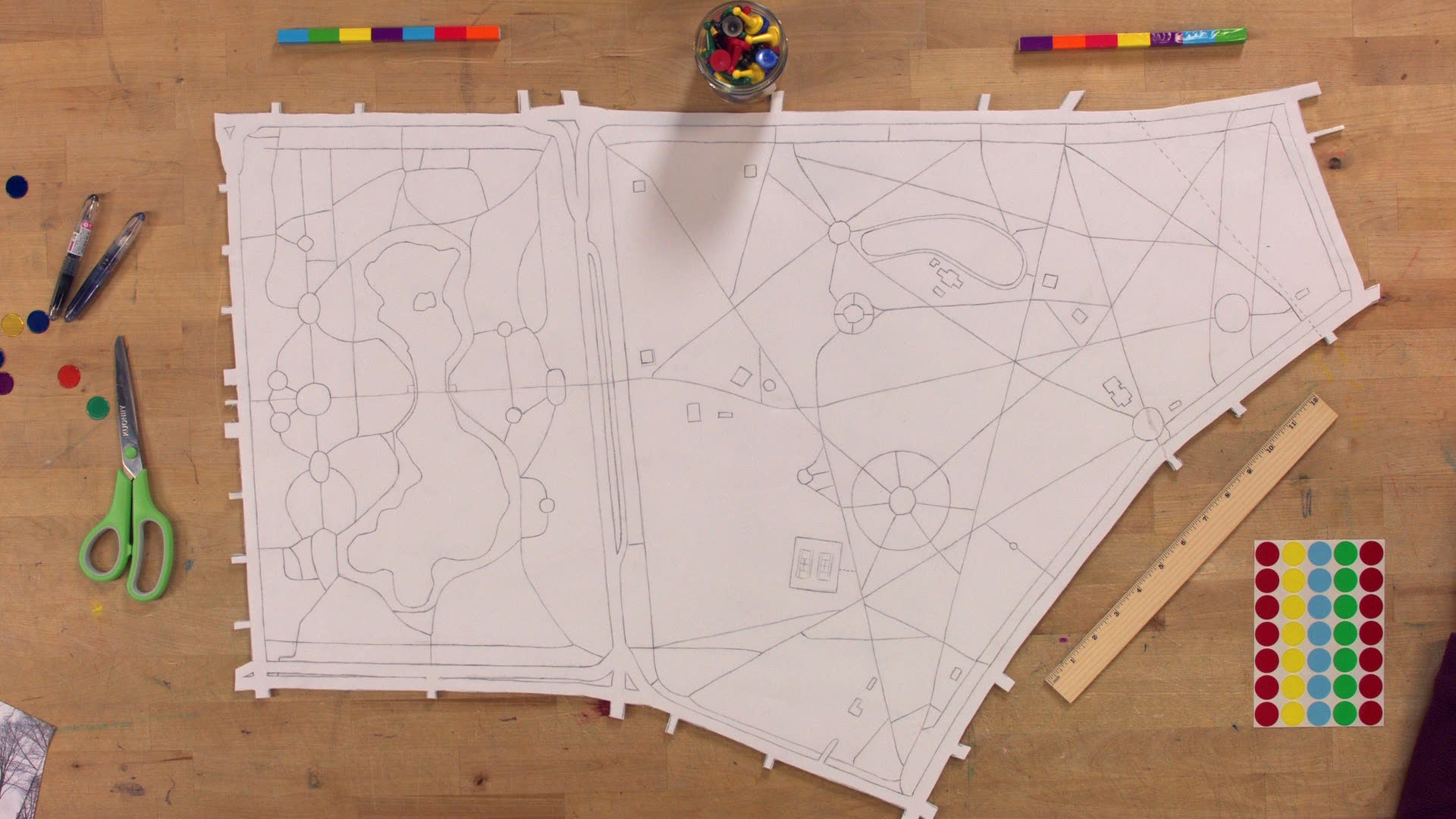
Students were encouraged to take their own photos in Boston Common and place these on the matching parts of the model. Their photos were related in some way to their essays. For example, a project on waste/trash might document the location of trash cans around the gardens. They could add whatever they wanted to their models; some students chose to keep it two-dimensional, with others opting for a three-dimensional approach.
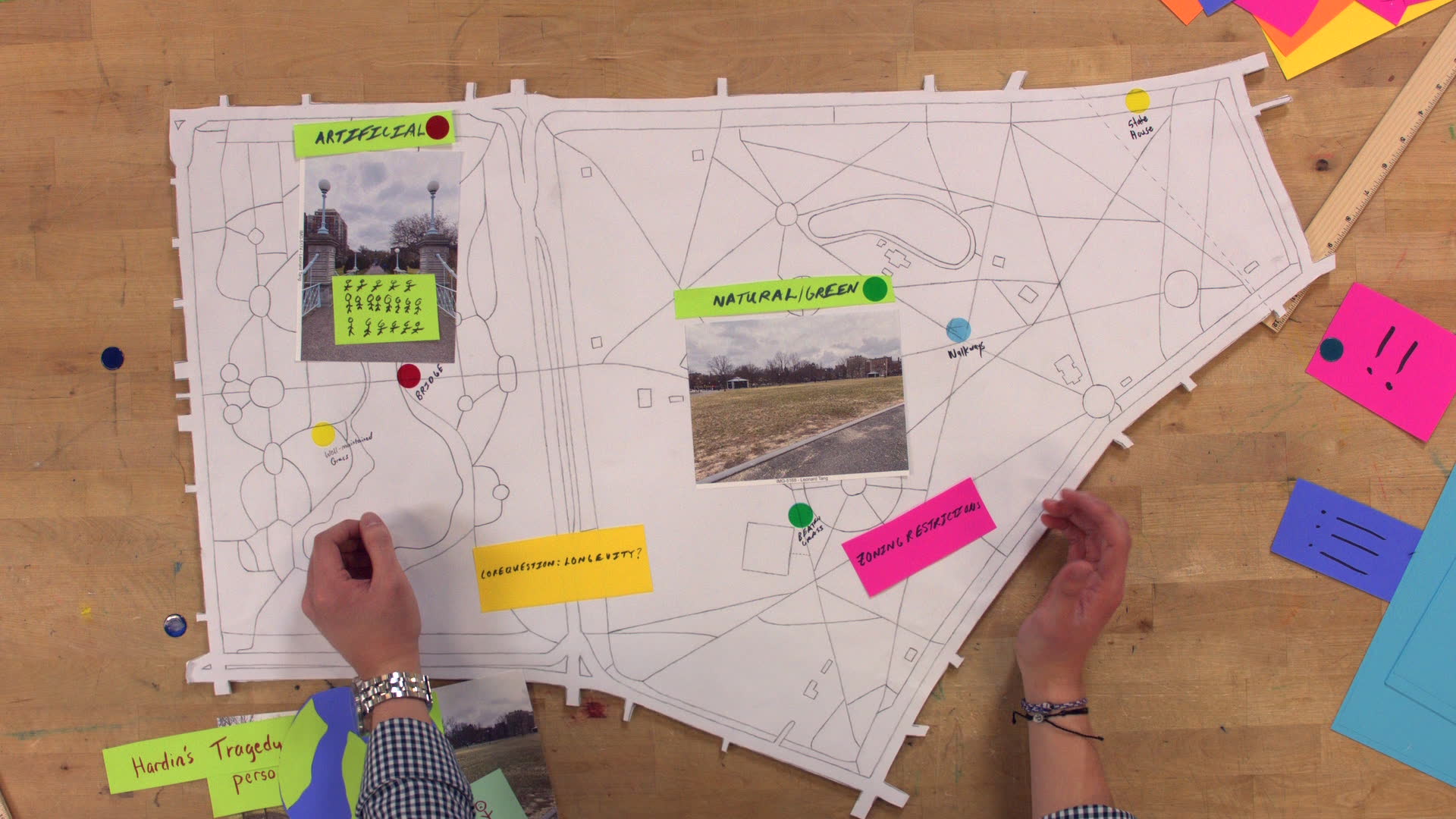
Due to the sooner-than-expected departure from on-campus classes, the final project involving the Charles River as a scale model was not required, but we were thankful that the Boston Common project was able to be used and be successful.
February 2020
02/24/20: The Parker Quartet
Earlier this year, the Learning Lab had the pleasure of hosting the Grammy Award-winning Parker Quartet for an inspiring performance. The main studio space within the Learning Lab had to be reimagined for such an event; a total reconfiguration of the tables and truss was required. Enter StudioLab! Members of StudioLab loved the challenge of figuring out the solution. Not only did the setup need to be visually appealing, but the acoustics had to be inch-perfect and the final arrangement had to be practical, taking into account the many cables and cameras that were required to record the performance. Furthermore, our setup had to be in harmony with what the Parker Quartet were comfortable with, as they have already have a setup that they are familiar with.
This is how we decided to set the space up:
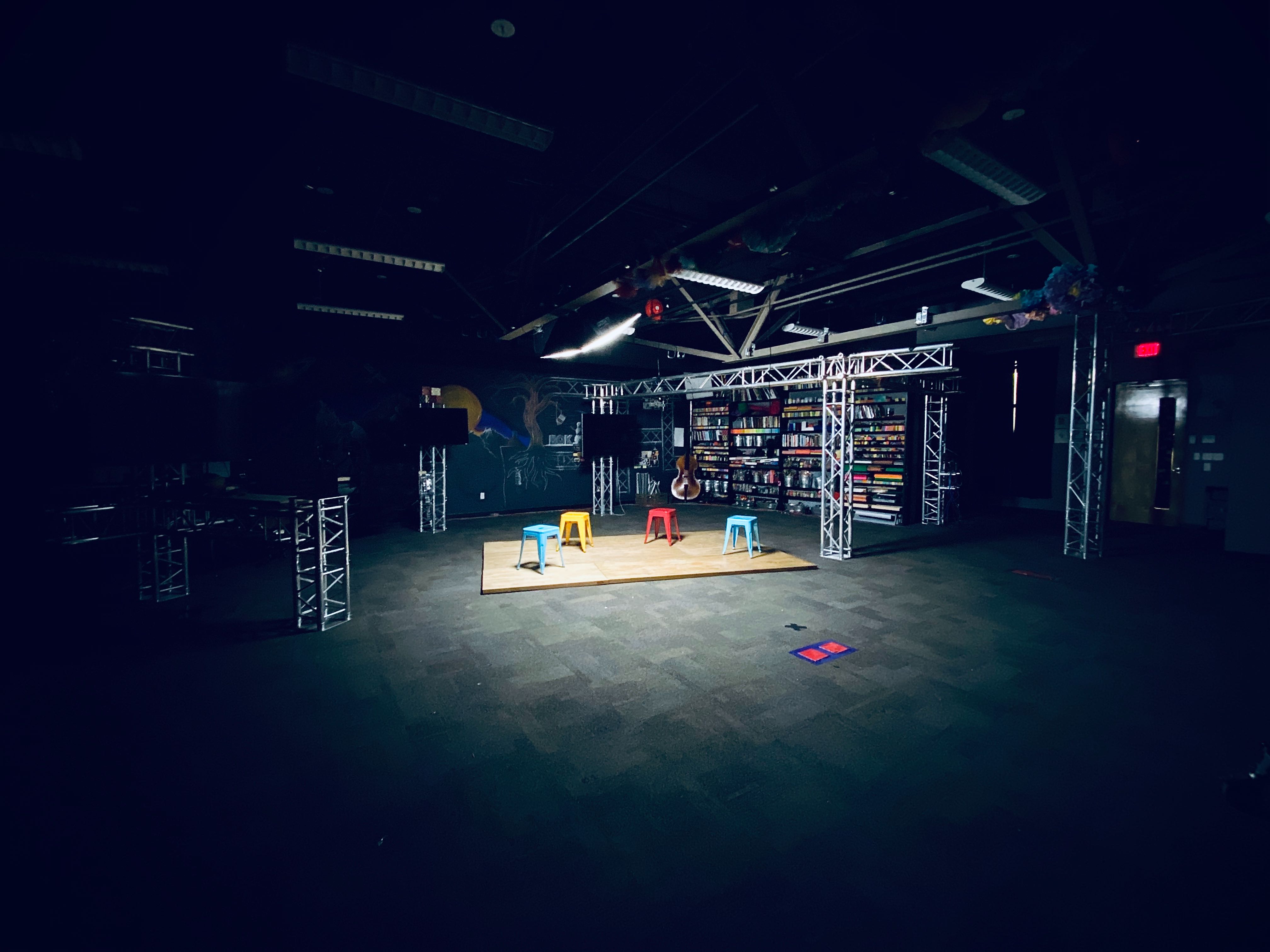
We tried to get as many camera angles as possible when recording, in order to have a wealth of material we could edit later. LLUFs Connor and Elmer helped the team film the performance!
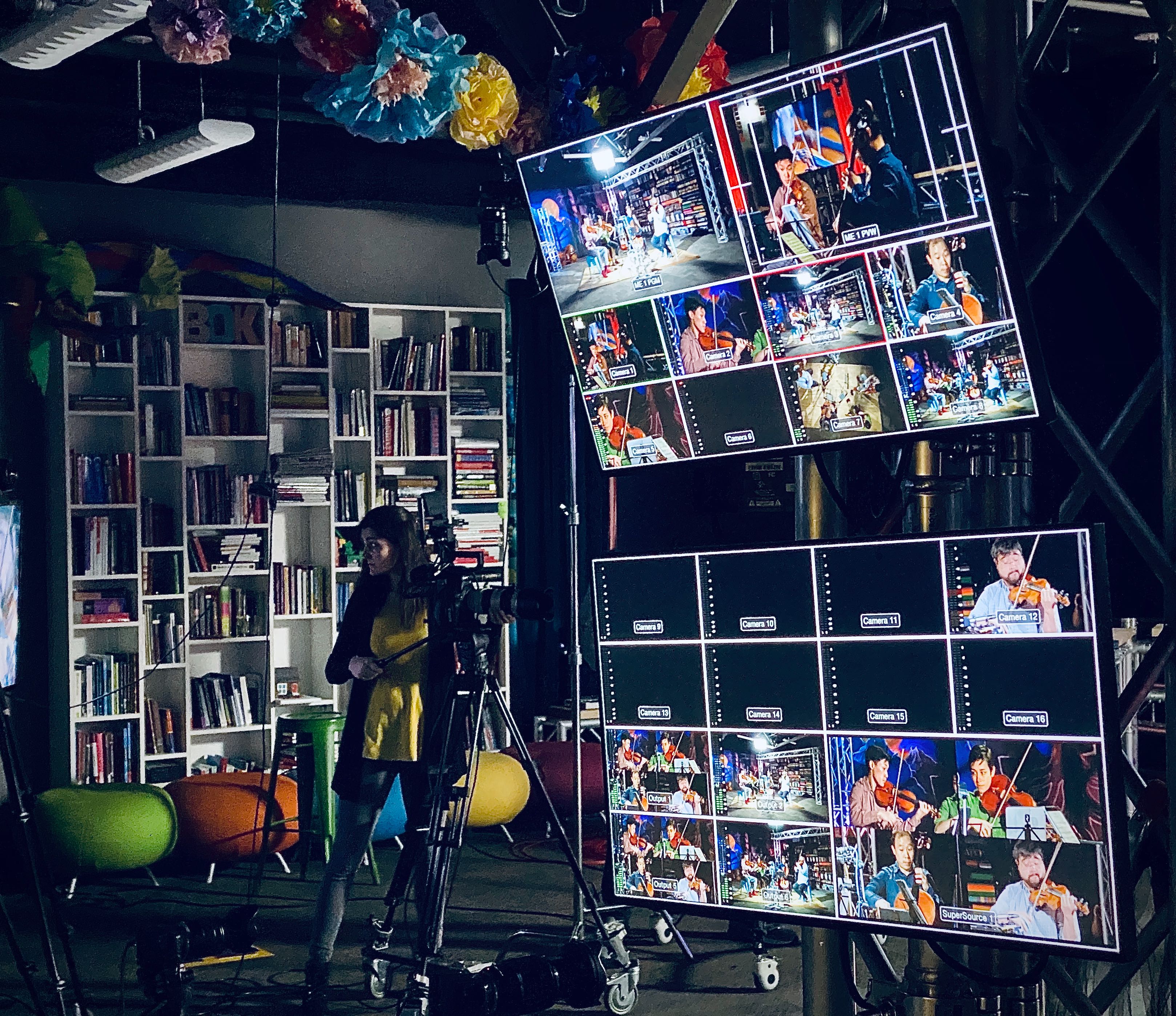
We are thankful to the Parker Quartet for joining us, and would love to host them again in the future!
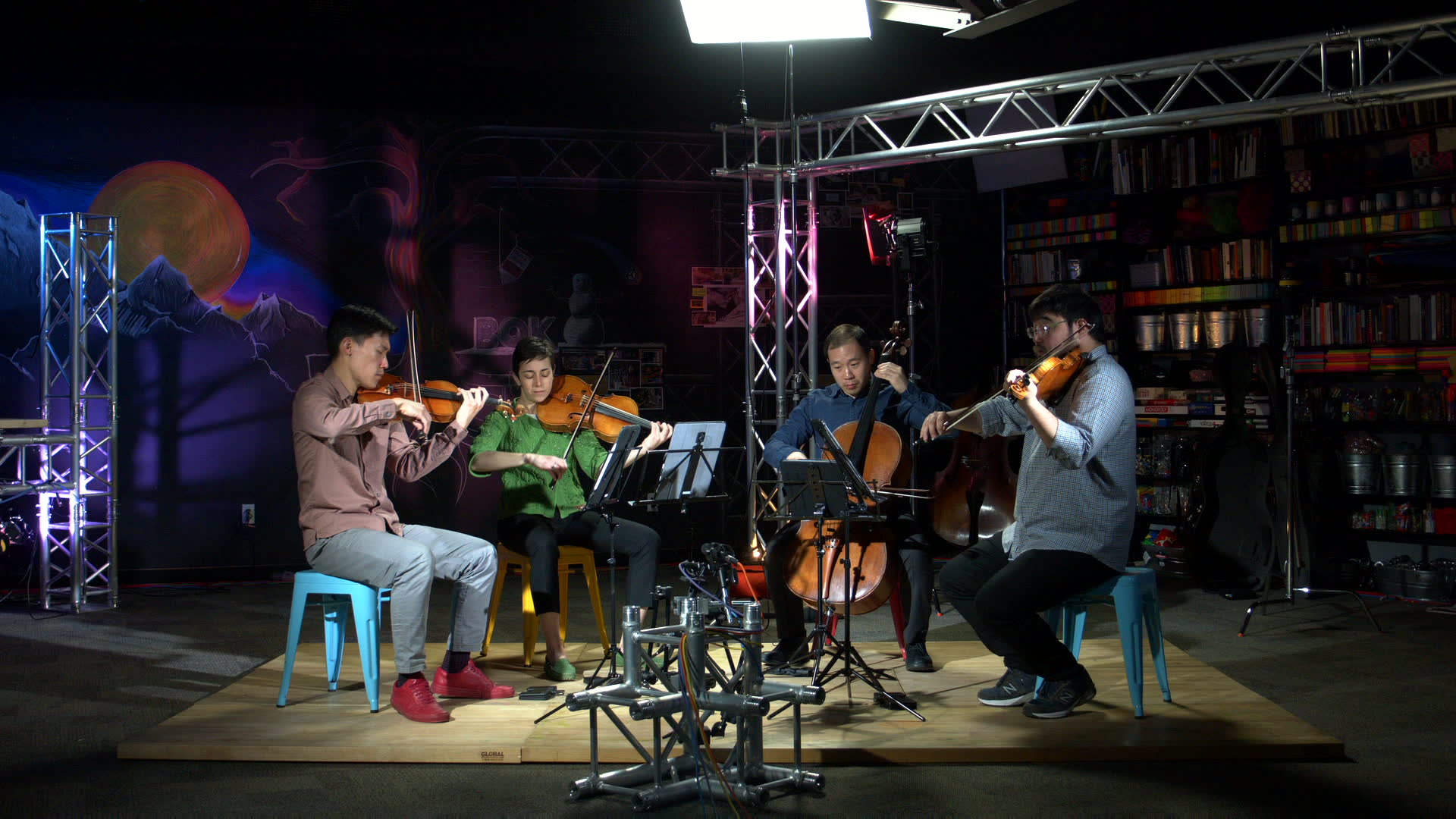
March 2020
Since the events that have shocked the world, StudioLab has understandably taken a back-seat with regards to Learning Lab planning. Figuring out solutions for students to work remotely has taken priority, and rightly so. However, this is by no means the end of StudioLab. In fact, it is just the beginning. The last academic year has shown that StudioLab can be a huge success; more and more classes requested our help as the semesters progressed. I can only imagine the great things that StudioLab will go on to achieve once we are back together in our physical spaces, wherever that may be. As the world begins to return to what we once knew, StudioLab will be needed more than ever. It will be needed to remind us all of what it's like to be back home (okay fine, back at work); we will design our studio space to reflect our people.
